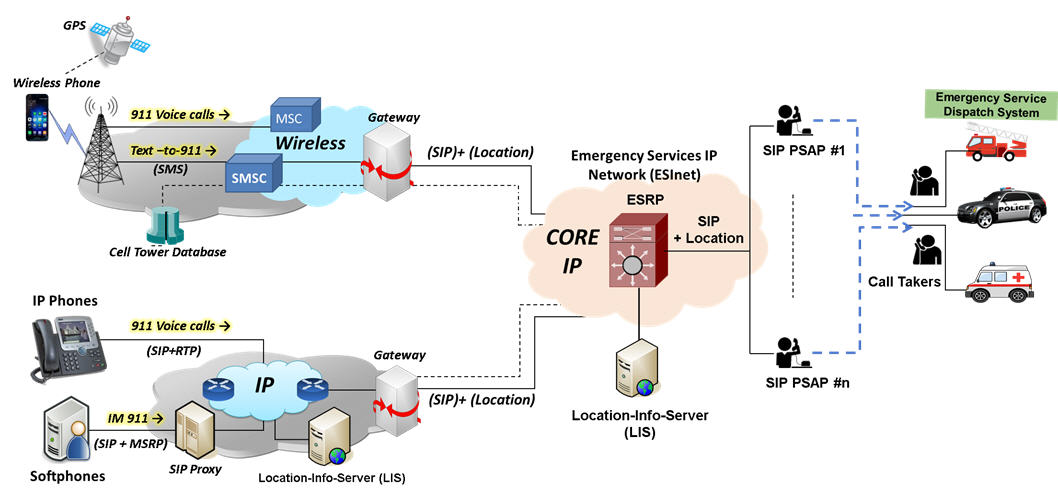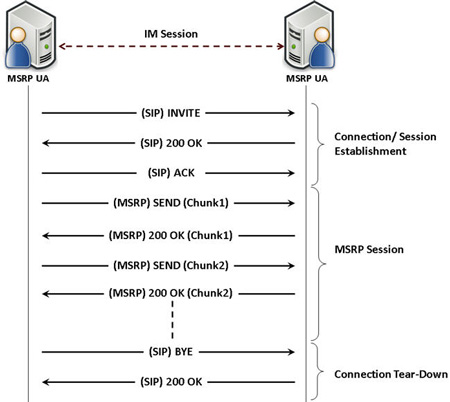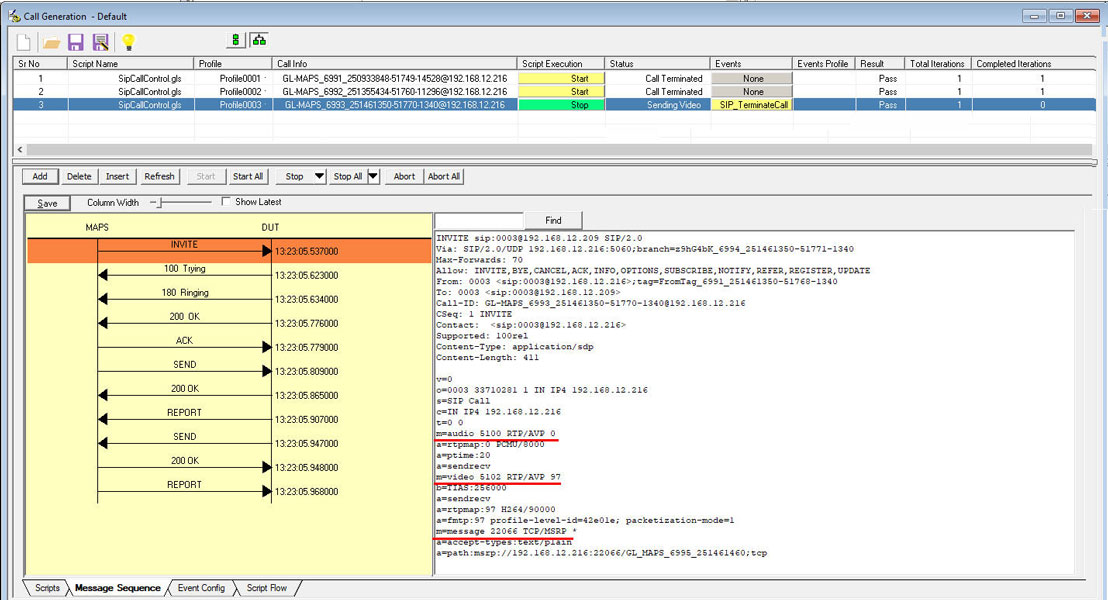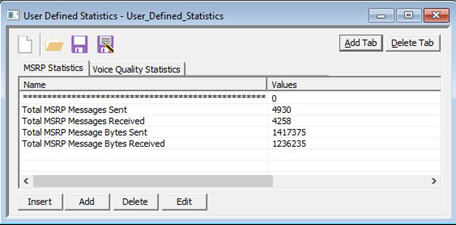MAPS™ SIP to Support
Instant Messaging using MSRP for Next Generation 911 (NG9-1-1)
12th, Jul 2019
Welcome to another July 2019 issue of GL Communications Newsletter providing information and insight into our MAPS™ SIP Protocol Emulator that generates and receives SIP Signaling with traffic. In this newsletter, we will be discussing Message Session Relay Protocol (MSRP) Emulation for Session Based Instant Messaging in MAPS™ SIP software. Public safety communication service providers can deploy this test tool for testing NG9-1-1 emergency services and components within the Emergency Services IP Network (ESInet).

General NG9-1-1 VoIP Architecture
Overview
NG9-1-1 networks based on the National Emergency Number Association (NENA) i3 standards define network transformation route to receive and respond to NG9-1-1 emergency requests via multiple media sources such as SMS, Video, Email, and Instant Messaging (IM).
Major wireless carriers have committed to providing Text-to-911 services to end users. In addition to these primarily carrier dependent services, there are many Over the Top (OTT) IM apps which connect users with the NG9-1-1 system directly.
To consider a series of messages exchanged in a private chat between SIP end-points in a single session, the messages are transported over a session-oriented instant message transport protocol called the Message Session Relay Protocol (MSRP).
GL’s enhanced MAPS™ SIP with MSRP support for Instant Messaging allows SIP vendors, wireless carriers, NG9-1-1 service providers, and emergency communications centers to validate IP applications for NG9-1-1 services prior to deployment.
Enhancements to MAPS™ SIP Emulator Software
GL offers enhanced MAPS™ SIP emulator with Instant Messaging (IM) delivery capability conforming with RFC 4975/4976 - Message Session Relay Protocol (MSRP) protocol.
Unlike regular SMSs, IM requires a series of messages exchanged between two or more parties to be treated as a single conversational message session. Once a TCP connection is established between the two end points, “session-mode” instant messages using MSRP are treated similar to audio or video media sessions. Thus multiple sessions to different end-points are established over a single TCP connection.

MAPS™ SIP (requires PKS120, PKS102/PKS109 and PKS112 licenses) software supports simulation of SIP/RTP sessions as well as instant messaging sessions over SIP using MSRP protocol. The supported call types can be IM Only Calls, Audio and IM Calls, and Video and IM Calls between multiple UAs. The software is capable of simulating high-volume SIP sessions for load testing and reporting thresholds.
Ready-to-use scripts and custom-build scripts allow advanced test scenarios using SIP methods like SUBSCRIBE/NOTIFY, REFER and INFO for testing NG9-1-1 interfaces.
MAPS™ SIP provides high-level and low-level APIs to be easily integrated into customer test environment for automated and remote testing. APIs are available in Python, Java, TCL, and VBScript.
Given below is a typical IM simulation between SIP/MSRP endpoints.

The above Instant text messaging flow is an example of communication exchange achieved using MAPS™ SIP and DUT (SIP PSAPs or SIP Phones). The software uses SIP as the transport protocol for exchanging SDP parameters. TCP IP and port are negotiated with MSRP Server. The MSRP message session is established (similar to RTP). In this method, multiple SIP MESSAGE requests are consistently delivered to the same call taker.
Within the session, media exchange and message transfer by chunking is handled. Each chunk is sent as a separate SEND request and is acknowledged (200 OK) by the endpoint. Reports can be used to verify the successful message transfer completion.
The following call generation screenshot depicts the MAPS™ SIP simulating ‘Audio and IM Calls’. During this call type, two different sessions will be established. There will be two media lines, one for audio using RTP session and another for instant messaging using MSRP session which are handled simultaneously.

Audio and IM Call Generation
The following call generation screenshot depicts the ‘IM Only’ call simulation. Only IM call is initiated from one of the UA terminals. During this call type, only text messages are sent/received using MSRP sessions.

IM Only Call Generation
MAPS™ SIP also handles simulation of ‘Video with IM Call’, during which a pre-recorded video is sent and received alongside ongoing IM session. Thus, it’s possible to simulate audio, video and text messages (using MSRP) on the same call. During this call type, there will be three media lines, one for audio, one for video, and another for instant messages using MSRP.

Video and IM Call Generation
MAPS™ SIP also provides User Defined Statistics which can be configured to provide MSRP statistics including metrics such as Total MSRP Messages Sent, Received, Bytes Sent, and Bytes Received. These statistics are calculated and updated periodically during run time.

User Defined MSRP Statistics
Important Features of MAPS™ SIP
- Supports UDP, TCP, and TLS transport types
- High Density version capable of high call intensity (hundreds of calls/sec) and high volume of sustained calls (tens of thousands of simultaneous calls/platform)
- MAPS™ CLI interface based on a client-server model allows users to control all features of MAPS™ through APIs (TCL, Python, VBScript, and Java Client)
- Supports almost all industry standard codec types - G.711 (mu-Law and A-Law), G.722, G.729, G.726, GSM, AMR, EVRC, SMV, iLBC, SPEEX, EVS, OPUS, and more (*AMR and EVRC variants require additional licenses)
- User-defined voice quality statistics for received RTP Traffic can be calculated and updated periodically during run-time to a csv file
- Supports 64-bit RTP core to enhance performance - handles increased call rate of up to 3000 calls with high volume traffic
- Supports both RTP G.711 Pass Through Fax Simulation and T.38 Fax Simulation over UDPTL
- Bulk Video Call Generation supported with H.264 and H.263 video codecs
 Back to Newsletter Index Page
Back to Newsletter Index Page